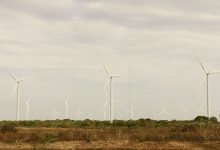Eco-labels, the next level
The European Commission will submit in May this year a new legislation on green investments, as part of its sustainable financing action plan. Introducing a unique system of rules and incentives for expanding green investments is the new challenge launched by Brussels in terms of avoiding money laundering through this investment type.
Under its new action plan, the European Commission will explore several opportunities to develop incentives to support the development of green investments. Among the first ideas launched in the public space are the wider use of eco-labels, this system following to also be applied for the future investments. These would be applied to bonds and investment funds. In parallel, a support system for green investments will be introduced. As a first step, it is considered to reduce capital requirements for green investments, including mortgages for energy efficiency or low emission cars.
The new system and the related risks
Lowering capital requirements is considered one of the most controversial proposals, since it could be used by financial institutions to reduce their capital reserves, directing them towards dubious green investments. Commission Vice-President Valdis Dombrovskis, responsible for social dialogue, financial stability and capital markets, has recently warned that any measure in this regard “would have to be closely calibrated, and based on a clear EU classification”.
The European Securities and Markets Authority (ESMA) could be appointed to supervise the new system.
Currently, only the European Investment Bank (EIB) uses a system to assess the extent to which investment projects are green, but European Commission officials have announced that the system the European executive will introduce is not a copy of the indicators used by the EIB to achieve this classification.
China, the leader in renewable investments
Global investments in renewable energy rose last year by 3 percent, to USD 333.5 billion, but below the USD 360 billion record in 2015, according to a study by Bloomberg New Energy Finance (BNEF) quoted by the international press.
Chinese investments in renewable energy totalled USD 132.6 billion in 2017, up 24 per cent from 2016 and a record high. Europe invested USD 57.4 billion last year, down 26 per cent from 2016, while the US invested USD 56.9 billion, a 1% increase over 2016.
The advance comes amid the increase in photovoltaic capacity, reaching USD 160.8 billion, up 18 per cent from 2016, with more than half of the investments made in China, according to BNEF data.
The surge in renewable energy investment last year is all the more remarkable as the cost of capital for solar energy has continued to decline.
Photovoltaic systems last year were about 25 per cent cheaper per megawatt than they were two years ago, according to Jon Moore, BNEF’s General Manager.







